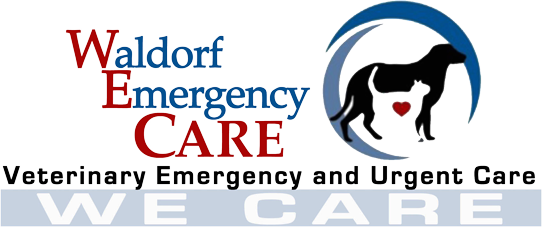General
What can I expect when I arrive with my ill pet?
Just like a human emergency room, all phases of treatment are determined on a case-by-case basis. We understand how important it is to have a rapid response to critical cases such as hit-by-car traumas. When you arrive, and emergency technician will meet you in the lobby prepared to collect your pet for emergency triage, treatment, and stabilization. This may include but is not limited to: checking the patient’s pulse, respiration, temperature, assessing the level of consciousness, obtaining blood samples and blood pressure, placing a intravenous catheter, providing oxygen support, administering intravenous fluids, pain management and CPR. The receptionist will obtain information from you regarding your pet’s medical history, as well as the current injury/illness. This information will allow us to create a medical record where treatments and medications can be logged.
How will my family veterinarian be kept informed?
WECARE works in partnership with you and your family veterinarian to provide the most complete veterinary care possible. Your veterinarian will receive medical notes, surgery reports, laboratory reports, digital radiographs, and discharge instructions by email or via fax.
Pet Anesthesia
Why do you use pet anesthesia?
If a pet requires surgery or a procedure, we use anesthesia for several reasons. First, we use anesthesia to make sure that pets stay still during the operation. Second, we use anesthesia to put the pet to sleep so that it does not feel pain or discomfort.
What are the risks of pet anesthesia?
One of the biggest risks of anesthesia is that the pet might have an allergic reaction. While this is rare, this is something that we are prepared for. If this happens, we know how to treat it.
Is Pet Anesthesia Safe?
In order to put an animal to sleep for a brief time, veterinarians use powerful medications to relax and sedate your pet. These medications are used under the strict guidance of the veterinarian while we monitor the animal’s vital signs to ensure it is responding well.
How Do I Prepare My Pet For Surgery?
One of our veterinarians will likely provide specific instructions before surgery. Often, you will have to withhold food for up to 24 hours. It is very important to follow these instructions. When your pet is sedated, its gag reflex will be suppressed. Your pet may choke if it vomits while under sedation. Our vet may also request that you withhold water. These instructions are subject to change depending on the nature of the procedure.
Is Pet Anesthesia Necessary?
Generally speaking, pet anesthesia is needed for a variety of procedures. If our veterinarians are administering emergency pet care or urgent care, your pet may need to be sedated so we can safely perform the operation. Likewise, if the surgery is planned, anesthesia is still typically necessary. Sedating your pet will help it avoid pain and lower the risk of complications. If you have any concerns about your pet’s anesthesia, please mention them before the procedure.
Is My Pet Too Old for Anesthesia?
Some studies have shown that older animals are at a slightly increased risk while being put under. That said, the risks are still low. Furthermore, anesthesia is often necessary to successfully perform an operation or to provide urgent care.
How Long Does It Take for the Anesthesia to Wear Off?
You will need to speak with one of our veterinarians about the specifics of the medications used to sedate your pet. Typically, veterinarians use only as much anesthesia as is needed to minimize the risks. That said, your pet may feel woozy or disoriented for a little while after waking up. The longer the pet is knocked out for the procedure, the longer the pet will take to wake up. In general, pets are going to wake up slowly but within an hour of the procedure having reached its end.
Pet Emergencies
Is your pet sick enough for a trip to the emergency veterinarian?
Anything is worth at least a phone call if you’re not sure what’s wrong, while some things require immediate attention by a veterinarian.
How to tell the difference? Here are some signs that should have you heading for a veterinarian, day or night:
- Seizure, fainting or collapse.
- Eye injury, no matter how mild.
- Vomiting or diarrhea
Anything more than two or three times within an hour or so. Also, a dog who’s trying to vomit (or may be vomiting foam, licking lips), has a drum-tight abdomen and a “roached-back” appearance indicative of abdominal pain.
- Allergic reactions, such as swelling around the face, or hives, most easily seen on the belly.
- Any suspected poisoning, including antifreeze, rodent or snail bait, or human medication. Cats are especially sensitive to insecticides (such as flea-control medication for dogs) or any petroleum-based product.
- Snake or venomous spider bites.
- Any wound or laceration that’s open and bleeding, or any animal bite.
- Trauma, such as being hit by a car, even if the pet seems fine. (Again, the situation could be quite different on the inside.)
- Any respiratory problem: chronic coughing, trouble breathing or near drowning.
- Straining to urinate or defecate.
Although some other problems may not be life-threatening, they may be causing your pet pain and should be taken care of without delay. Signs of pain can include panting, labored breathing, increased body temperature, lethargy, restlessness, crying out, aggression and loss of appetite. Some pets seek company when suffering, while others will withdraw.
When in doubt, err on the side of caution, always. Better to be wrong about a minor medical problem than to have a pet who becomes critically ill because you guessed wrong about a major one.
Call Waldorf Emergency Care if you have any questions. Our staff is here 24/7/365. (301) 705-9700
